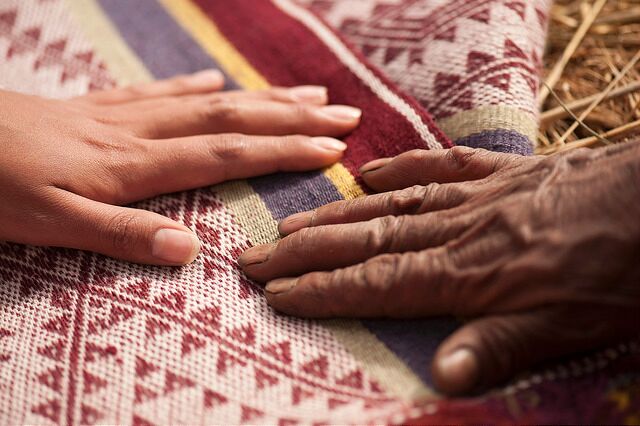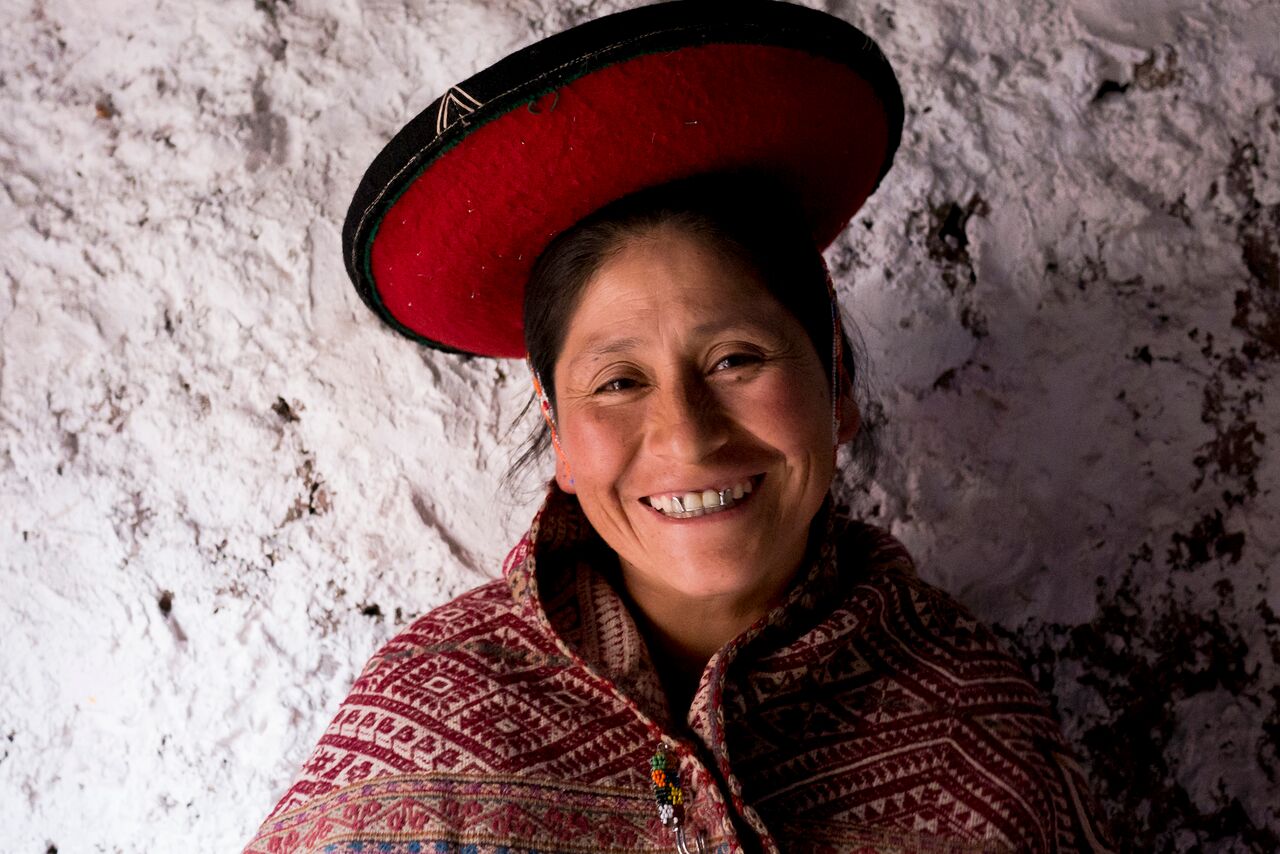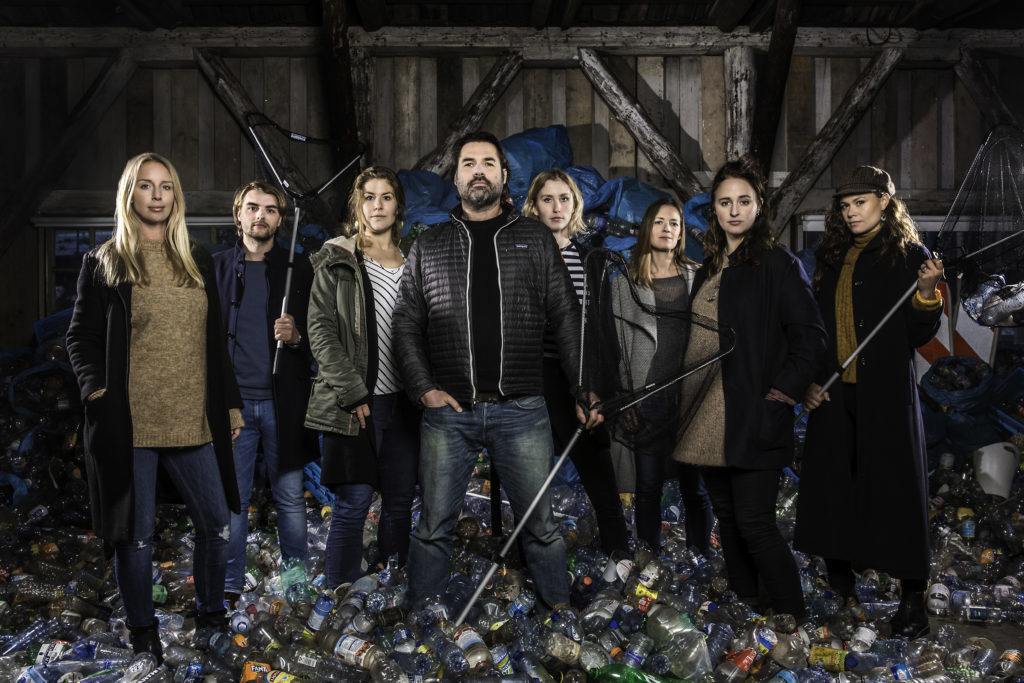Artisanal craftsmanship is intertwined within the fabric of Peru, with the tradition of weaving stretching back 5,000 years, from the coastal cities of Paracas and Nazca, to the high Andean peaks of Cusco and Ayacucho.
This rich heritage will not protect itself, however, as it is vulnerable, as every consumer industry is, to losing a demand and thus not being able to support the supply.
The first point to tackle this issue, of generating popularity amongst a largely unknown source of fashion in western terms, is to simply provide a shop window, or marketplace. This is where some truly inspiring companies have stepped in and given hope to what once was a dwindling source of employment.
Threads of Peru is one of these companies, as a not-for-profit social enterprise that connects the world to handmade treasures of the Andes, helping to strengthen ancient craft techniques and empower artisans. Threads of Peru are revitalising these cultural traditions by creating sustainable markets for them.
I spoke to Sarah Confer, Executive at Threads of Peru, who has been with the company now for six years.
Q. How did Threads of Peru come to life?
SC: Threads of Peru was formed in 2009. The year before that, Apus Peru Adventure Travel Specialists, a Cusco-based travel agency and trek operator, worked with a group of graphic design students from Halifax, Canada to create a website to promote the weavings made by the women in the communities where Apus Peru operated its treks. This collaboration was called “Project Peru”. The project was so successful and so inspiring that two members of the design team and the co-owners of Apus Peru joined forces to found a non-profit organization in Cusco, Peru, called “Threads of Peru”.
In the photo: One of the empowered female artisans Credit: Threads of Peru
Q. What has your impact been so far, regarding the protection of artisanal crafts, the empowerment of indigenous artisans and the goal of educating the global community?
SC: Since it was formed, Threads of Peru has continuously evolved, helping the weavers hone their skills, increasing our capacity in order to provide greater economic support to the communities, and improving our online presence so as to reach a wider audience. We have also increased from 2 communities to 7, now representing the weaving traditions of 4 different regions within Cusco.
Empowerment
One way that we empower the artisans that we work with is through economic investment. Between 2011 and 2015, our investment in the communities increased almost 600%, and the number of weavings made per year also increased 420%.
Currently,
- income from weaving represents a 25-50% increase in the weavers’ annual income
- 131 families are supported through weaving for Threads of Peru
- 281 children of school age or younger are supported by weaving
The weavers tell us that they invest any increase in income in their children’s well-being: in better nutrition, education, and living conditions. In addition to financial support, the skills the weavers develop as a result of working with Threads of Peru leaves them equipped to find and take on new opportunities of their own. We’ve seen this in action as weavers tell us about traveling to Lima or Arequipa for fairs, workshops or other events that they have been invited to or which they have sought out themselves.
We have also entered some of our artisans’ work in local weaving competitions. In 2015, Lucia, one of the weavers from Chaullacocha, won first place in a local competition. She was so excited, she came straight to our office after she received her award, and told us that it was thanks to all she’d learned over the years of working with Threads of Peru that enabled her to win. We could not have been more proud!
Protection of artisanal crafts
We remain committed to promoting the revitalization of ancient weaving traditions, including little-known or challenging techniques, even while we work with designers to create modern, fashionable products.
I’m especially excited about our 2018 Collection because of all the unique techniques that are highlighted. Just under half of the products in this year’s collection are made using handspun alpaca, and a quarter of them feature a style of thick-spun yarn which is characteristic of one region in Cusco but otherwise not commonly seen.
The Tawa pillow is one of my favourite pieces in this collection because it features discontinuous warp and weft weaving – a technique that is very challenging and practiced by only a few. In fact, in order to produce it, the weavers in the community where it is made had to reconnect with their elders in order to learn! This is exactly what we’re all about. And on top of that, it has this incredible modern aesthetic that we hope will be widely appealing. The name comes from Tawantinsuyo, the Quechua name for the Incan Empire, and also means “four” in the Quechua language.
In the photo: The Tawa pillow Credit: Threads of Peru
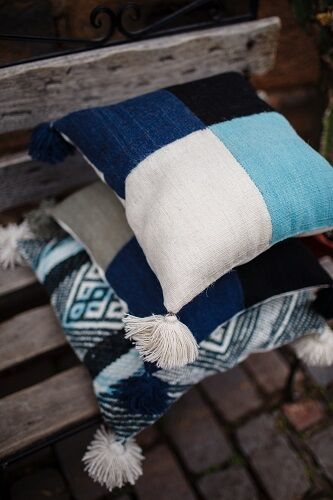 Educating the global community
Educating the global community
Education is a key part of what we do, in order for people to understand and appreciate the work that goes into making the products we sell, and the richness of their cultural value. We do this through blogs, social media and the occasional presentation. It’s hard to know how well we are reaching people, but it does seem to me like there is increasing awareness about handmade and artisanal products.
Education also goes both ways. We look for ways to expose the artisans we work with to new ideas in order to spark creativity. Sometimes that’s just a field trip to another community to connect with fellow artisans and learn about what they are doing. This past fall, we participated in an occasional “gathering of weavers” hosted in Cusco, Peru. People attended from all over the world, and we were able to sponsor a handful of our weavers to attend, too. All of those who attended had a great time and learned a lot, but the best feedback we got came from Angela, from Totora, who said that she found the conference so inspiring that it renewed her pride and her enthusiasm to keep weaving.
Q. How has your experience been with operating a not-for-profit enterprise? What were the difficulties you have encountered?
SC: The difficulties are almost always to do with lack of resources, both manpower and financially. It’s a bit of a vicious cycle as fewer resources mean difficulty in hiring more people, but fewer people mean not being able to spend as much time as we’d like on activities that could help us to bring in new resources, not to mention other long-dreamed about projects.
Q. What, according to you, are the roles played by not-for-profit social enterprises and for-profit enterprises? How could either model evolve to become more impactful?
SC: Oh, I love this question! I think there are flaws with the classic version of both models that leaves them both a bit paralyzed. Non-profits face barriers that deny them access to capital and to revenue-generating activities, meaning that they are always struggling for money, which impedes them from achieving their goals and being sustainable. For-profits on the other hand, face barriers if they want to actually do something ‘good’ with their revenues, as the fundamental purpose of business, from a legal perspective, is to earn profits. If you do anything to minimize or decrease profit-earning potential, that can lead to lawsuits!
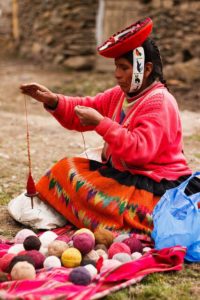
Making it easier for non-profits to engage in business activities or acquire capital or making it easier for businesses to operate with a social purpose – instead of a purely profit-generating purpose – would go a long way to dealing with the issues the world faces. Luckily, there is momentum underway to achieve both of these things, with several jurisdictions experimenting with new legal business structures, B-corp certification standards, and even discussions about reducing restrictions for non-profit structures.
The thing is, people who are motivated to use their time for the benefit of people and the planet, should be able to do so and still earn a living. There shouldn’t need to be a duality between for- and non-profit structures in order to do socially beneficial work.
Q. What plans do you have for the future?
SC: I want to see traditional weaving here recognized as a sustainable cottage industry and viewed as a good career choice for young people. To achieve that, we need to reach a volume of sales that will provide more, and more consistent, work for the weavers, so a lot of our future plans are geared towards increasing sales.
To that end, and building on the success of our 2018 collection, we’re gearing up to bring the designer who helped us last year back to Peru to work on a new collection for 2019. Over and over this year, the weavers have been commenting how grateful they are for the orders and we can’t help but draw the parallel between a professionally-designed collection and the higher volume of work this year. We’re super excited to have her back, but to do so, we’re running a crowdfunding campaign to make it happen. You can read more about our campaign at StartSomeGood.
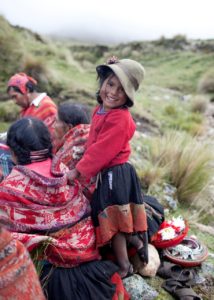
In the photo: A young girl, daughter of one of the artisans Credit: Threads of Peru
In addition to increasing our sales and production, I would also like to see us complete a number of projects, from building top quality weaving centres in our partner communities, where they are desired, to running more skill-building workshops. I also have academic dreams, as I’d love to do research documenting the pallays used in each community and what they mean, among many, many other things.
To that end, and building on the success of our 2018 collection, we’re gearing up to bring the designer who helped us last year back to Peru, to work on a new collection for 2019. Over and over this year, the weavers have been commenting how grateful they are for the orders and we can’t help but draw the parallel between a professionally-designed collection and the higher volume of work this year. We’re super excited to have her back, but to do so, we’re running a crowdfunding campaign to make it happen. You can read more about our campaign at StartSomeGood.
Editors Note: The opinions expressed here by Impakter.com columnists are their own, not those of Impakter.com


